We met with Elena Vertikova, mid-career Russian artist who lives and works in Gdansk, Poland and who has been nominated among the recipients of the New Image / New Vision Award in 2020. In this conversation, the artist reflects on the last five years of her artistic practice, discussing past and future perspectives.
S.B. Dear Elena, would you like to introduce your practice by talking about your background? Your work emerges from a specific climatic, environmental and cultural context rich of traditions.
E.V. After studying and working in Marketing in Russia, I took a painting course in Kaliningrad, Russia and after five years of this course, I decided to apply to the Academy of Fine Arts in Gdansk. Currently I am a student of V year of Academy of Fine Arts in Gdansk. This is because my family shared with me the fact that we have Polish roots and this has been very interesting to me and to my research. Now, I live here and I feel that I am in the right place. I am not afraid of borders as well as I am not afraid of winter but yes, there are cultural differences between Russia and Poland, for example the way of perceiving distances. Overall, these contexts have strongly shaped my bond with nature, water, sea and space, even now when we are all experiencing a very strange situation. I began my artistic journey actually, because I was so impressed by nature that I wanted to try to paint it, using water and light as tools for expression. To some extent in my work, I try to show nature also as a metaphor. In this regard, commenting on my work, my masters often say that they do not actually see water, but they feel the presence of water itself. This is very much interesting to me although, I may say, I am still searching the perfect medium that could express my work.
S.B. In its essence, your practice draws from water and light in support of a wave-moving image. You also talk about scientific methods. How do conceive the relationship between art and science?
E.V. I always try to investigate the relationship between science and the arts. This has been noticed by my supervisors and your reading is also interesting in this sense. My research draws from the thinking of the science historian James Gleick, who in Chaos, Making a New Science, 1987, describes how photons can act in two different places at the same time. In this view, I deal with light as a tool to express part of this chaos. In my practice, I ask myself: how can I transfer it to art? how can I show it? This is because we live in the place of light, the space of life and being. My practice focuses on mixing light and colors as a visual experience. It is something different from a painting because I look for oppositions and contrasts. Overall, I think this is a visual question: I am very much interested in how light can change by mixing in a space or on a surface.
S.B. Would you like to tell us a bit more about your practice with light?
E.V. My practice with light is very young, dating back to the work Blue in 2018. This work was conceived and developed during an international workshop Light as a Creative Tool planned by Dr Robert Sochacki and the Academy of Fine Arts in Gdansk at Shipyard spaces. I chose to work with analog light because although it is a difficult medium to deal with because light can filter and reflect, it has a strong physical presence. Analog light is important to me because it resonates with the nature of materials. I like mediums that can be manipulated by hands, like filters and mirrors for example, in reason of their physical presence. They are mediums which are almost disappearing today and in my work I want to make them available again through another language. In this sense, light like water, they both emerge from situations. This first work was followed by an invitation to Interference, an international project in Medina in Tunis directed by Bettina Peltz and Aymen Gharbi. This also followed the invitation to be a part of Women Working with Light community. As for the light, so for the water, I did not decide to use these elements, but it was all natural. I have always been connected to water, already as a child living with my family in a village near big river Tom, in Siberia. I did not think about this connection when I started to approach art but now, I perceive it and it has become a necessity for me. How light and water became part of my practice is enigmatic. They are elements that have no boundaries. They are rather free and as materials, you can’t hold them in a hand, but a lot can be done with them. They are almost illusory.
S.B. In your statement you also speak of absence (of water and light).
E.V. Absence of water, absence of light, yes, their sources are always kept in a dark space. In the works such as Undark, 2019, and Surfaces, 2019, in fact, I look into the visible and the invisible. For example, if you stand in front of water and you try to catch it, you can only catch it for a moment but the next moment water suddenly changes, and so it is with the light. I’m currently working on a site-specific project in a historical water tank in Gdansk by using reflected light in a place where there is absence of water and I am trying to bring water in it by focusing on this binary opposition, in this contrast. This can also be perceived in the video A Dream, 2020, where each element is reflected by contrast in terms of absence and presence, trying to circumscribe all these aspects in the fabrics of a video-image.
S.B. Many of your works are site-specific.
E.V. I started to work site-specifically in Tunisia. This gave me the opportunity to reflect on how much the specificity of a place can meet your work, also from the perspective of the visitors entering in contact with it. It is an interesting point of view because one arrives in a place with its own history and narration. At the same time, I try to express myself not by staying on the surface, but with the idea of allowing people to connect. Both for Interference and for the project I am currently working on, I try to connect my story with the history of a place because I think it makes sense when a place connects to another place. Sometimes the visual aspect is enough to think about the history of a place, perhaps due to its specific narrative. So, it was for Interference which was conceived in a cellar built for the collection of rainwater under building where The House of Poetry is located. I revisited all these aspects in my work presented for this international festival in Medina, Tunisia. For the first time, through this work, I was able to reveal signs and inscriptions that were impressed at the time of the French Revolution. They were saying ‘freedom’ and this was the best place I could ever imagine for my work because in there, I found light, water, reflections and signs which have remained hidden for centuries and only now they are visible to visitors. Through this experience I began to understand how water and light can tell the story and the memory of a place. This experience was also epiphanic for an understanding of site-specific practices and the next level of my artistic investigation.
S.B. At this point, I would like to ask you which artists have inspired your work.
E.V. I am very fascinated, I would say almost astonished by the light sources of James Turrell’s works. I am also inspired by the work of Bill Viola because of his relationship to water. I am also interested in the photographic works by artists Jeff Wall and Hiroshi Sugimoto in particular because of his style of clearly defined contradictions. I would say that I am interested in the traces of time and memory.
S.B. But basically, your work begun with Painting to further explores Performance and Video as seen in With Closed Eyes, 2018.
E.V. Yes, it’s true, there is always a performative trace in my paintings. This is because as an artist, there is always a fear to face the canvas. But, if you practice with your eyes closed as if blindfolded, there is no fear anymore and you can fully express the grace of your work. In the future however, I am interested in exploring multimedia practices. Painting will stay with me as a private dimension.
Info:
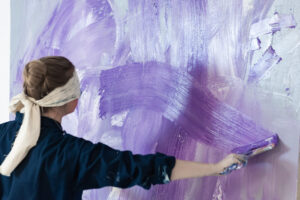 Elena Vertikova, With Closed Eyes, 2018, credits Tomasz Freda, courtesy the artist
Elena Vertikova, With Closed Eyes, 2018, credits Tomasz Freda, courtesy the artist
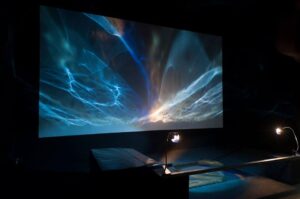 Elena Vertikova, Light as a Creative Tool, 2018, credits Tomasz Freda, courtesy the artist
Elena Vertikova, Light as a Creative Tool, 2018, credits Tomasz Freda, courtesy the artist
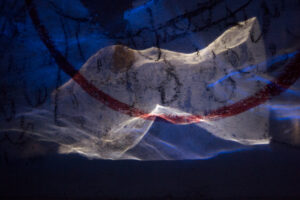 Elena Vertikova, Interference, 2018, credits Tomasz Freda, courtesy the artist
Elena Vertikova, Interference, 2018, credits Tomasz Freda, courtesy the artist
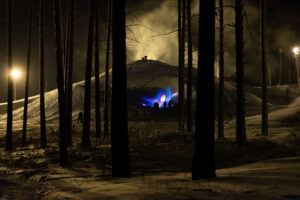 Elena Vertikova, Undark, 2018, credits Tomasz Freda, courtesy the artist
Elena Vertikova, Undark, 2018, credits Tomasz Freda, courtesy the artist
 Elena Vertikova, Surfaces, 2021, credits Tomasz Freda, courtesy the artist
Elena Vertikova, Surfaces, 2021, credits Tomasz Freda, courtesy the artist
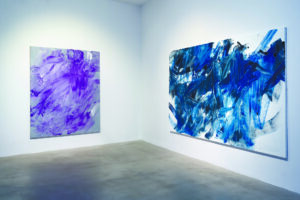 Elena Vertikova, With Closed Eyes, 2018, credits Tomasz Freda, courtesy the artist
Elena Vertikova, With Closed Eyes, 2018, credits Tomasz Freda, courtesy the artist
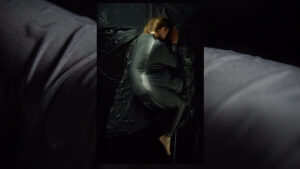 Elena Vertikova, A Dream, 2020, credits Tomasz Freda, courtesy the artist
Elena Vertikova, A Dream, 2020, credits Tomasz Freda, courtesy the artist

She is interested in the visual, verbal and textual aspects of the Modern Contemporary Arts. From historical-artistic studies at the Cà Foscari University, Venice, she has specialized in teaching and curatorial practice at the IED, Rome, and Christie’s London. The field of her research activity focuses on the theme of Light from the 1950s to current times, ontologically considering artistic, phenomenological and visual innovation aspects.


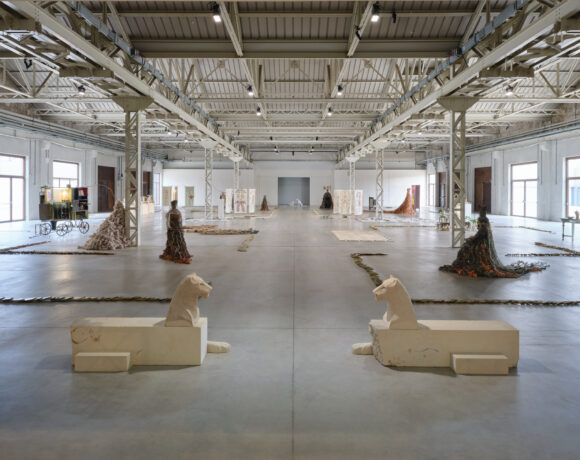



NO COMMENT